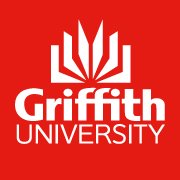Full description
The data set is a repository of different data developed as part of the overall project. Broadly speaking, the data steps involve five principal steps: Run wholesale market electricity model and extract key half-hourly data produced from model runs typically over the period 2029-30 to 2050-51. This data is half-hourly, so for a normal year will entail 17520 data points and for a leap year 17568 data points. There are 17 normal years and 5 leap years in the period 2029-30 to 2050-51. From Step (1), we then run Matlab scripts to convert this data from a series of single columns vectors to a ‘(365 x 48)’ or ‘(366 x 48)’ matrix structures, depending upon whether the year in question is a normal or leap year. We then use the data from step (2) to paste into template files that will automatically calculate Gigajoule gas usage that will be used to assess project feasibility for certain types of novel gas turbine technologies – i.e. pure methane, pure hydrogen and mixed blends of both gases. The financial feasibility assessment is also undertaken using template excel files with information provided as to where key data has to be copied into the template files to obtain the desired results, also utilising gas usage data from Step (3) above. The logic of the excel files follow that of cost benefit analysis drawing on Net present Value (NPV) and Internal Rates of Return (IRR) methodologies to assess financial feasibility. The author’s have written a manuscript that we will submit to journals for consideration of publication. These journals generally require that the data that underpins the research results has to be stored as supplemental data for purposes of reproducibility.Issued: 2025-03
Data time period:
2029 to 2051
Spatial Coverage And Location
text: Queensland, New South Wales, Victoria, South Australia, Tasmania
text: Queensland, New South Wales, Victoria, South Australia, Tasmania
Subjects
Applied Economics |
Applied Mathematics |
Applications in social sciences and education |
Economics |
Environment and Resource Economics |
Financial Economics |
Mathematical Sciences |
NPV |
Operations Research |
carbon price |
financial viability |
hydrogen |
peaking gas turbines |
sensitivity analysis |
User Contributed Tags
Login to tag this record with meaningful keywords to make it easier to discover
Identifiers
- DOI : 10.25904/1912/5788

- Handle : 10072/435658



